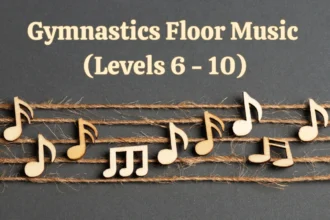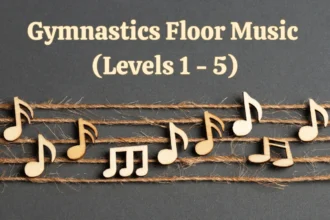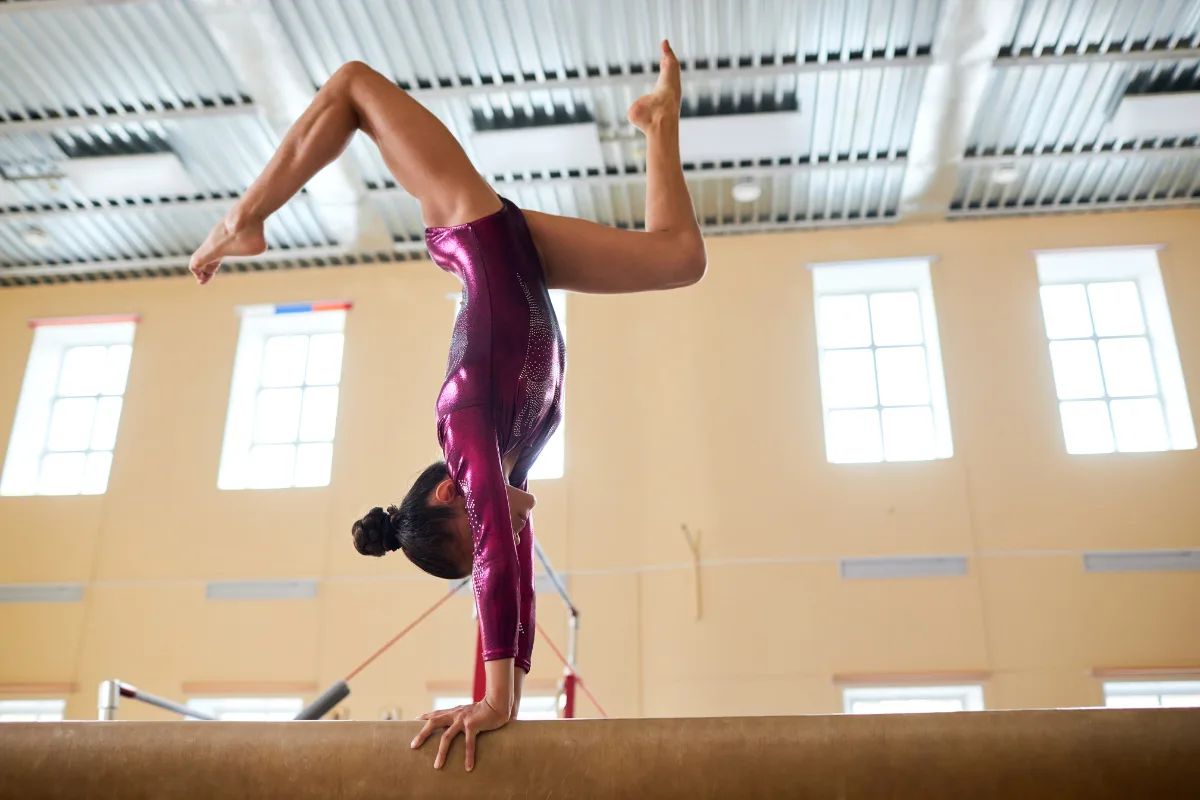The balance beam is a showcase of precision, grace, and artistry. Beyond the acrobatic skills, the poses and transitions between elements are essential for creating a captivating routine. Incorporating a variety of artistic poses enhances visual appeal and demonstrates a gymnast’s flexibility, control, and creative range.
Here are ten must-have artistic poses to consider for your beam routine:
| Pose | DV (2025–28) | Code Classification | Key Focus |
|---|---|---|---|
| Arabesque | A (0.10) | Non-flight acro balance | Leg at or above horizontal; 2-sec hold |
| Front (T) Scale | A (0.10) | Non-flight acro balance | Front leg lifted; hips square; 2-sec hold |
| Needle Scale | A (0.10) | Non-flight acro balance | Vertical split line; hips square; 2-sec hold |
| Y-Scale | A or B | Non-flight acro balance | Side leg lift; leg held; posture; 2-sec hold |
| Back Scale | A (0.10) | Non-flight acro balance | Leg straight back; flat line; 2-sec hold |
| V-Sit | A (0.10) | Non-flight acro balance | Legs lifted in V; core control; 2-sec hold |
| Chest Stand | A (0.10) | Non-flight acro mount | Chest contact; controlled leg lift |
| Wolf Turn | A–C | Turn on support | Controlled squat spin; consistent arms |
| Split Leap Hold | A (0.10) | Frozen leap (acro/dance) | 180° split held mid-air; 2-sec freeze |
| Back Attitude | A (0.10) | Non-flight acro balance | Bent leg behind; high thigh; 2-sec hold |
1. Arabesque
A beam classic, the arabesque demonstrates poise, balance, and line extension. This pose is one of the most iconic and time-honored in gymnastics, combining the elegance of ballet with the strength of beam technique. It can be used to open or anchor choreography, and is frequently required in compulsory and optional routines.
How to Do It:
- Stand on one foot on the beam.
- Lift the other leg straight behind you, ideally to horizontal or higher.
- Arms may extend forward, sideways, or into a graceful curve overhead.
- Hold for at least 2 seconds for full credit.
Tips: Keep the supporting leg straight and focus your gaze slightly forward to maintain balance. Engage the glutes and core for better stability.
Code Note: A-level (0.10), non-flight acrobatic balance. Must be held motionless for 2 seconds.
Choreography Ideas:
- Arabesque → ½ turn → Y-scale
- Switch leap → immediate arabesque hold
- Arabesque → side-handstand dismount fake-out
2. Front (T) Scale
This elegant pose adds contrast and demonstrates front flexibility. The front scale isn’t as common as the arabesque, making it a standout when executed well. It’s especially effective at the start or end of a dance sequence.
How to Do It:
- Stand tall on one leg.
- Lift the other leg forward as high as flexibility allows.
- Hold the extended leg with your hand or extend both arms for style.
- Maintain a long spine and open chest.
Tips: Avoid leaning back too far. Keep hips square and core engaged. Point the toes of both legs.
Code Note: A-level (0.10), non-flight acrobatic balance. Must be held motionless for 2 seconds.
Choreography Ideas:
- Front scale → arabesque
- Front scale → high passé turn
- Front scale → knee drop or sit
3. Needle Scale
The needle scale creates a dramatic vertical line that draws the eye and signals control. It’s a favorite among gymnasts who want to showcase extreme flexibility in a striking way.
How to Do It:
- Stand tall on one foot.
- Lean forward while lifting the other leg vertically behind.
- Keep both legs straight and torso aligned with the base leg.
- Hold for at least 2 seconds.
Tips: Keep hips squared. Engage the core and back to stay stable.ght, and your body aligned. Core engagement is key. Avoid rotating the hips—aim for a squared, vertical split.
Code Note: A-level (0.10), non-flight acrobatic balance. Requires a controlled, motionless 2-second hold.
Choreography Ideas:
- Needle → illusion turn
- Needle → press to handstand
- Needle → split jump
4. Y-Scale
That “leg-to-the-ear” moment that instantly grabs the judges’ attention. The Y-scale is one of the most visually striking poses in a beam routine. It showcases hip flexibility, leg control, and a gymnast’s ability to hold a challenging side-split position while maintaining posture and expression.
How to Do It:
- Stand tall on one foot on the beam.
- Lift the free leg out to the side and hold it with the same-side hand.
- Keep the torso upright and the standing leg straight.
- Hold for at least 2 seconds.
Tips: Avoid twisting your torso or dropping your hip. Focus on growing tall through the spine while lifting the leg high.
Code Note: A-level (0.10) or B-level in some systems if performed on full relevé. Must be motionless for 2 seconds.
Choreography Ideas:
- Y-scale → ½ turn
- Y-scale → knee arabesque
- Switch leap → immediate Y-scale
5. Back Scale
A timeless balance element, the back scale is a graceful way to showcase poise, strength, and extension. Often used in classical choreography, it highlights clean lines and full-body control from head to toe.
How to Do It:
- Stand tall on one foot on the beam.
- Lift the opposite leg straight behind you without bending the knee.
- Extend the arms for balance—one forward, one sideways, or both overhead.
- Hold the position for at least 2 seconds.
Tips: Keep your chest lifted and avoid leaning too far forward. Aim to form a straight line from your head through your extended foot. Engage your glutes and back muscles to maintain the shape.
Code Note: A-level (0.10), non-flight acrobatic balance. Must be held motionless for 2 seconds for credit.
Choreography Ideas:
- Back scale → turn in arabesque
- Back scale → low kneel with arm sweep
- Back scale → needle scale for a progressive shape change
6. V-Sit
A seated balance that breaks the mold of typical beam choreography. The V-sit offers a dramatic shift in posture, demanding core strength and mid-beam control. It’s a rare and memorable pose when performed well.
How to Do It:
- Sit squarely on your glutes or tailbone in the center of the beam.
- Lift both legs together in a V-shape.
- Keep your arms extended either forward or outward.
- Hold the position for 2 seconds.
Tips: Keep your back long and avoid collapsing in the chest. Balance by engaging your core deeply and pointing the toes.
Code Note: A-level (0.10), non-flight acro element. Legs must remain lifted and stable for full credit.
Choreography Ideas:
- V-sit → backward roll
- V-sit → shoulder stand
- V-sit → elbow lean with arm sweep
7. Chest Stand Mount
A bA bold and contortion-like entry pose, the chest stand mount turns the beam into a stage for extreme flexibility. It’s often used at the beginning of a routine to grab attention and establish immediate control and artistry.
How to Do It:
- Begin lying face-down on the beam, chest in contact with the surface.
- Push your chest down while lifting both legs up and over your head.
- Keep the arms gently pressing into the beam or relaxed at the sides.
- Hold for at least 2 seconds.
Tips: Warm up your back and shoulders thoroughly before attempting this pose. Avoid jerking into position—lift smoothly and stay stable.
Code Note: A-level (0.10), non-flight acrobatic element. Chest must maintain contact and legs must lift with control.
Choreography Ideas:
- Chest stand → press to handstand
- Chest stand → forward roll or rise to knee
- Chest stand → arm sweep or stylized exit
8. Wolf Turn
A unique low-to-the-beam rotational skill that blends pose, balance, and spin. The wolf turn is dramatic and requires strong core engagement and mental focus.
How to Do It:
- Squat low with one leg tucked and the other extended forward.
- Begin a controlled spin—usually 1 to 2½ turns.
- Keep arms lifted and consistent throughout the rotation.
Tips: Start with ½ or 1 turn before progressing. Keep eyes steady and core tight to avoid tipping off balance.
Code Note: A–C level, depending on number of revolutions. Must complete turns cleanly with control and proper shape.
Choreography Ideas:
- Wolf turn → arabesque
- Wolf turn → knee pose with arm sweep
- Wolf turn → split jump
9. Split Leap Hold
This is a leap frozen in time. The split leap hold emphasizes both amplitude and artistry, transforming a traditionally dynamic skill into a beautiful still image. It demonstrates a gymnast’s ability to not just jump, but control the peak of her leap.
How to Do It:
- Perform a split leap on the beam.
- At the highest point, pause briefly in a split position.
- Legs should be fully extended with toes pointed.
- Hold the shape for at least 2 seconds.
Tips: To create the illusion of floating, the leap must have height. Push off the beam with full power, then engage the core to stabilize mid-air.
Code Note: A-level (0.10), classified as a frozen leap. The split must reach 180° and be clearly held.
Choreography Ideas:
- Split leap → hold → Y-scale
- Switch leap → split hold
- Split leap → arabesque pose
10. Back Attitude
A softer variation of the arabesque, the attitude pose adds a touch of ballet flair with the bent back leg. It’s great for expressing musicality and contrasts well with sharp acrobatic skills. This pose is especially effective in routines with classical or lyrical music.
How to Do It:
- Stand on one foot.
- Lift the other leg behind with the knee bent and foot pointed upward.
- Arms may be overhead or extended gracefully to the sides.
- Hold for at least 2 seconds.
Tips: Keep the thigh lifted and avoid letting the foot drop. Stay tall through the chest and lift with control.
Code Note: A-level (0.10), non-flight acro. Requires a clean, still 2-second hold.
Choreography Ideas:
- Attitude → full turn → kneeling pose
- Back walkover → attitude pause
- Split jump → attitude hold





